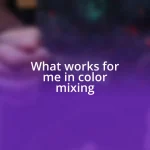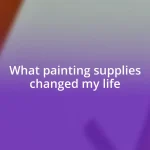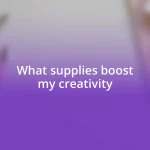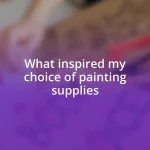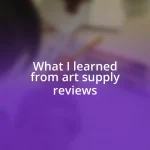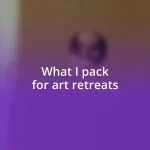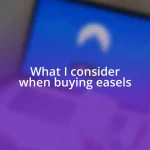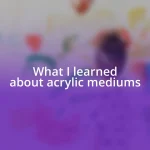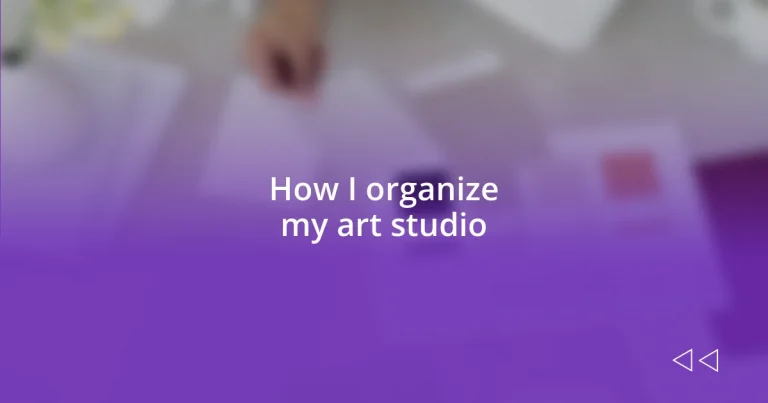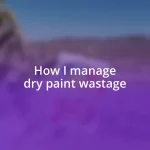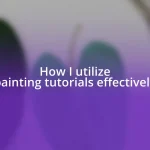Key takeaways:
- Assessing and organizing your art studio space enhances creativity, making it a welcoming and functional environment.
- Decluttering art supplies and arranging tools efficiently can rejuvenate passion for creating and improve workflow.
- Maintaining organization through regular reviews and labeling systems ensures a tidy workspace that supports consistent creativity and productivity.
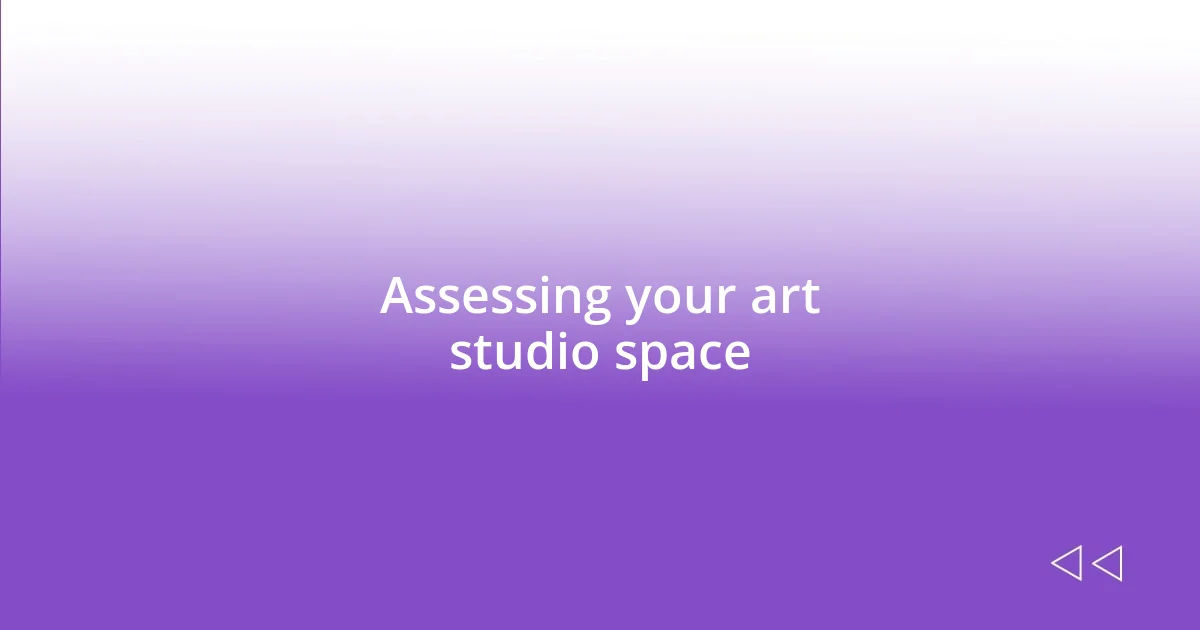
Assessing your art studio space
Assessing your art studio space is an important first step to unleashing your creativity. I remember the first time I walked into my current studio; the sheer potential was exhilarating, yet I quickly realized the chaos stifled my inspiration. Have you ever felt overwhelmed by clutter, standing in front of a canvas while distractions drown out your artistic voice?
As I took a closer look at my surroundings, I began to identify what truly mattered to me. For instance, I rearranged my space to have natural light streaming in, which changed everything—I felt more energized and focused. What elements could you tweak in your own space to make it more inviting?
After decluttering, I made zones for different activities, like painting, sketching, and crafting. This helped me visualize my workflow, making the space not just functional but a haven for creativity. It’s fascinating how assessing and organizing your studio can transform it from a mere room into a true sanctuary for artistic expression. Have you assessed your space? What changes could you make today?
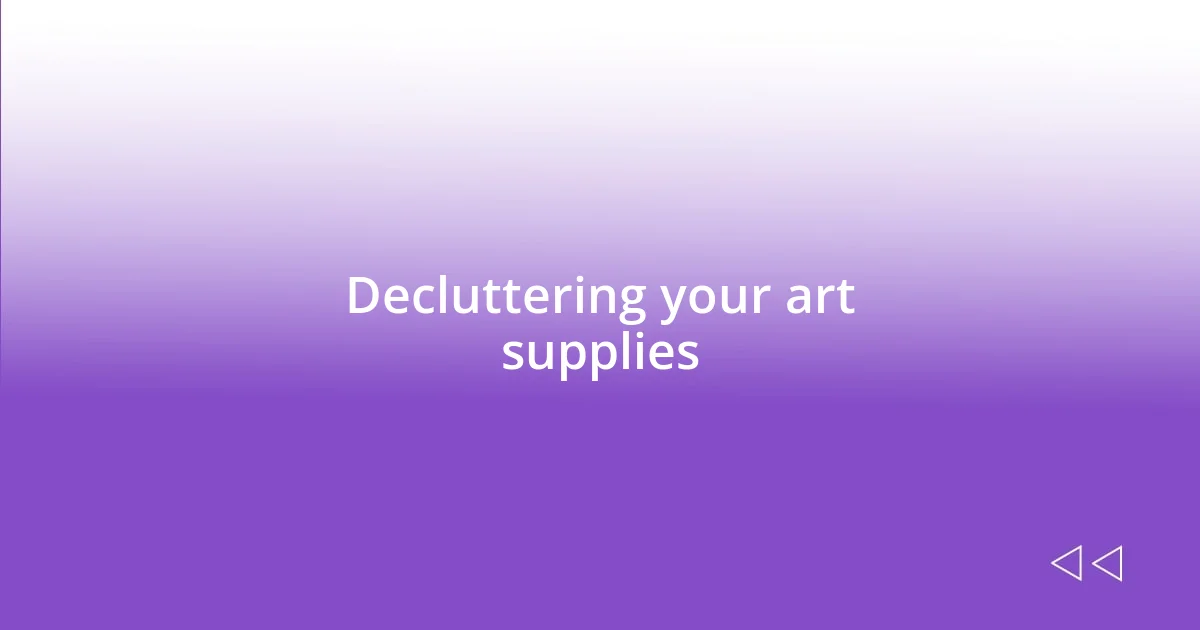
Decluttering your art supplies
Decluttering my art supplies was a true game-changer for my creative process. I vividly recall rummaging through my overflowing drawers and shelves, only to find half-used tubes of paint and dried-out markers. It felt like looking for treasures in a junkyard, and honestly, it drained my enthusiasm. By setting aside time to sort through everything, I was able to rediscover tools I had forgotten about and reclaim the joy of using my favorite supplies.
To effectively declutter your art supplies, consider these steps:
- Sort by Type: Group similar items together—paints, brushes, pencils, etc.
- Evaluate Condition: Discard or recycle any supplies that are broken, dried up, or no longer serve a purpose.
- Limit Choices: Keep only a few favorites of each type; this keeps the decision-making process simple during creation.
- Be Ruthless: If you haven’t used it in the past year, it may be time to let it go.
- Organize Thoughtfully: Use clear containers or labels to make it easy to see what you have at a glance.
Taking these steps not only tidied my space but rejuvenated my passion for creating. There’s something incredibly liberating about seeing a neatly organized array of tools that inspire new ideas instead of overwhelming me.
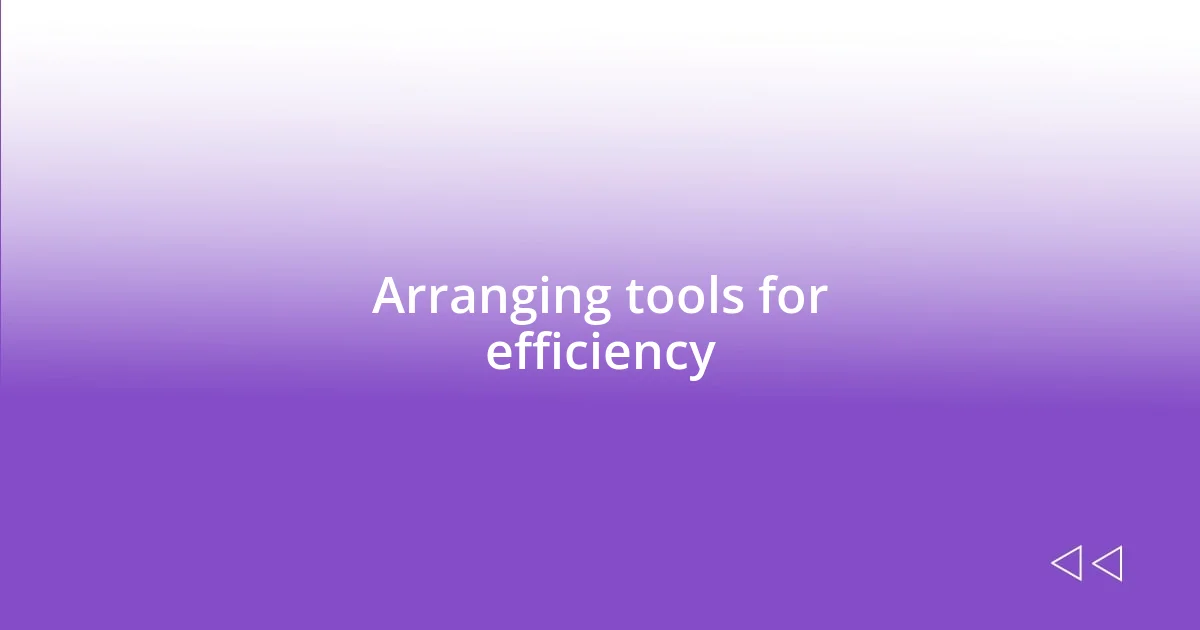
Arranging tools for efficiency
Arranging my tools for efficiency has been a transformative experience. Initially, my brushes and palette knives were scattered across various surfaces, making it challenging to access what I needed when inspiration struck. I decided to dedicate a specific drawer solely for my brushes, categorized by type—watercolors, acrylics, and oils. It’s incredible how much easier it is to find exactly what I need when everything has its place. Have you noticed how much time you might waste searching for a single brush or color?
In addition to drawers, I invested in a pegboard to hang my tools visibly. This setup not only saves space but also adds a creative touch to the wall, acting as an ever-evolving art piece as I change my tools and arrangement. Having immediate access to my most-used items keeps my flow uninterrupted, allowing me to focus on the art rather than the chaos. Honestly, there’s something oddly satisfying about seeing everything neatly hung in one place.
It’s worth noting the beauty of organization can also spark creativity. When I rearranged my colors by hue, I found it inspired new combinations and ideas that I might have overlooked. The colors practically sang out to me, inviting experimentation. When was the last time your tools surprised you? Think about how your organization methods might ignite your next creative spark.
| Method | Description |
|---|---|
| Drawer Organization | Sort and categorize tools in dedicated spaces for easy access. |
| Pegboard Usage | Hang tools visibly for efficiency and aesthetic appeal. |
| Color Arrangement | Organize colors by hue to inspire creativity and exploration. |
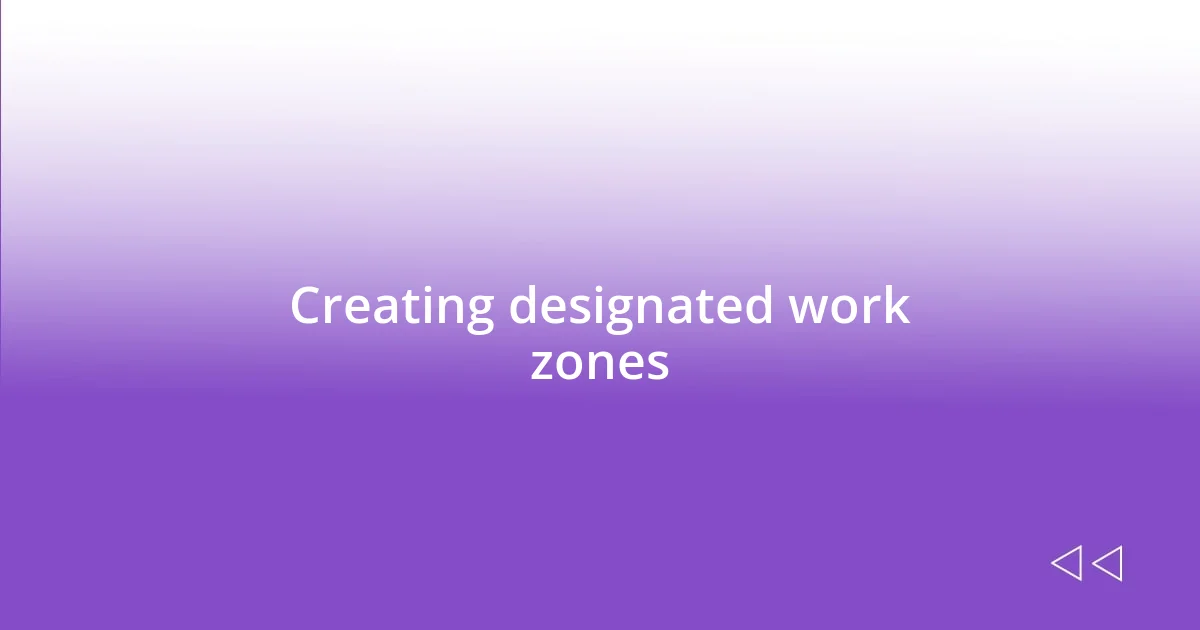
Creating designated work zones
Creating designated work zones in my art studio has been nothing short of liberating. I remember the first time I structured my workspace into specific areas for painting, drawing, and mixed media. Suddenly, each zone had a distinct energy, making it easier to transition between different creative tasks. Have you ever noticed how a cluttered space can cloud your mind? By establishing these zones, I found clarity—I could fully immerse myself in one process at a time, which enhanced my focus and creativity.
I also dedicated a cozy nook for my sketching sessions, complete with comfortable seating and a small table for my notebooks and pencils. This space has become my sanctuary where I often sip tea and let my thoughts flow freely. Whenever I sit there, it feels like I’m stepping into a world dedicated solely to exploration and imagination. How inspiring it is to have a physical space that draws you in and encourages you to dream!
To optimize each zone, I personalized the layout according to the activities I enjoy the most. The painting area boasts natural light and easy access to all my brushes and paints, while my drawing corner nurtures a calm atmosphere. I’ve also found that placing my tools within arm’s reach creates a seamless workflow. Isn’t it fascinating how a few simple adjustments can multiply your productivity and happiness? The distinct work zones have not only made creating more enjoyable but have also transformed my studio into a true reflection of my artistic identity.
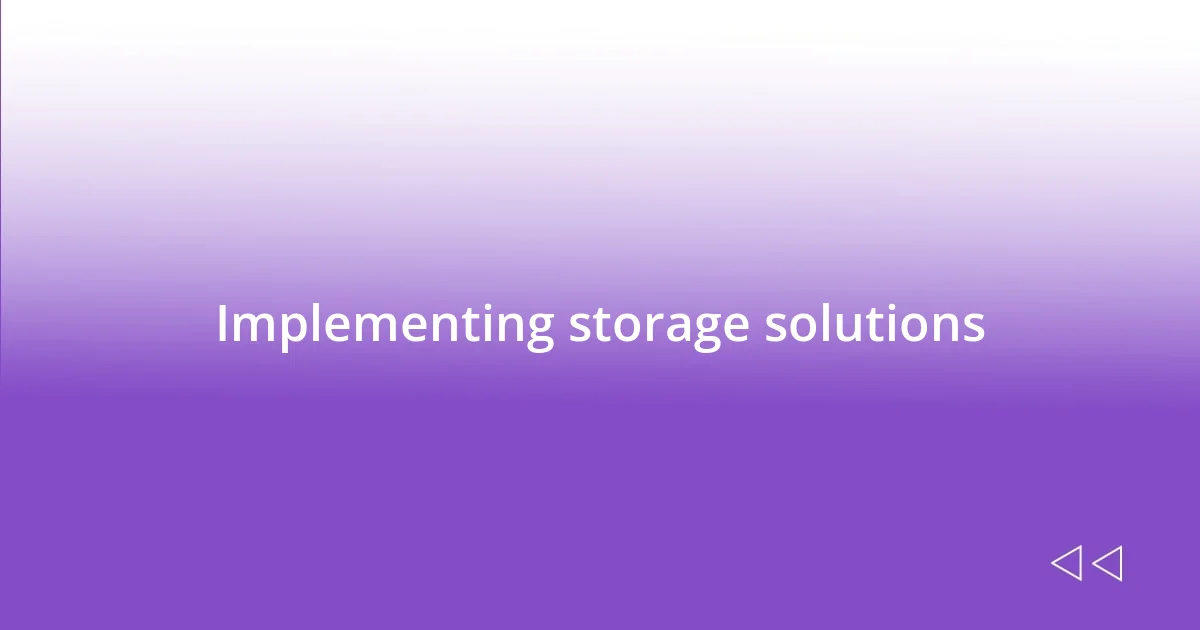
Implementing storage solutions
Implementing effective storage solutions has been a game-changer in my art studio. Early on, I struggled with a jumbled assortment of supplies that left me feeling overwhelmed. I soon realized the magic of utilizing transparent containers for smaller items like beads, clips, and glitters. Not only does this keep everything visible, but it also adds a sense of order to my work surface. Have you experienced that moment when everything just clicks into place? That’s exactly how I felt once my supplies were neatly stored.
To maximize vertical space, I began using floating shelves to display my materials and finished pieces. Watching my favorite works and supplies effortlessly blend into the decor made my studio feel more welcoming. Adapting to this kind of storage helped me create a sense of personal pride in my workspace. Every time I grab a paint tube, I’m reminded of not just the product, but the memories and processes attached to each piece. Isn’t it wonderful how spaces can evoke emotions?
Lastly, an unexpected find was using old wooden crates for storage. I painted them in bright colors and stacked them in a playful pattern, and now they house everything from sketchbooks to larger canvases. This solution not only provided functionality but also breathed new life into my space. It’s amazing how something as simple as repurposing can inspire so much joy. Have you looked around and considered how everyday objects can transform your creative environment?
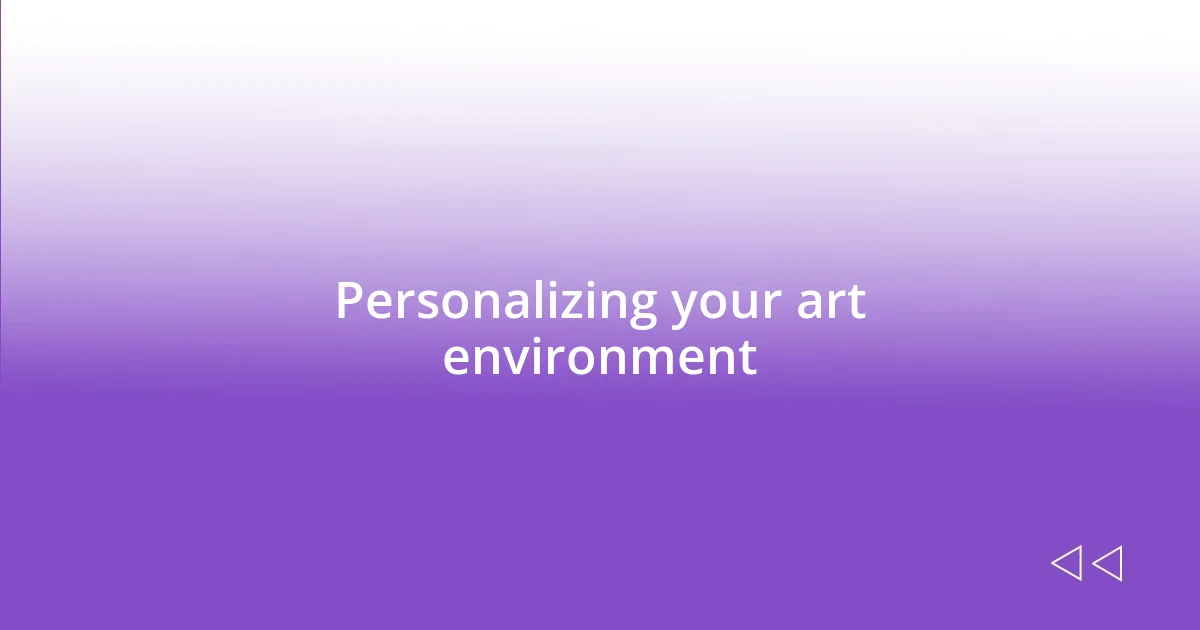
Personalizing your art environment
Personalizing your art environment is like adding your own signature to your creative space. I’ve adorned my studio walls with artwork that resonates with me—pieces that spark joy or provoke thought. Each time I glance at them, it’s a reminder of the journey I’ve taken as an artist. Don’t you ever find that a particular image or color can completely change your mood? It’s remarkable how our surroundings can inspire our creativity.
Every corner of my studio tells a story. I’ve curated small collections of objects that hold sentimental value, like a seashell from a beach trip or a trinket from a friend. Each item not only adds to the decor but also makes me feel grounded and connected to my experiences. I can’t help but smile when I see my grandmother’s old paintbrush—every time I use it, I feel her gentle spirit guiding my hand. Isn’t it fascinating how personal items can elevate the atmosphere and infuse your workspace with emotion?
I also love incorporating textures that resonate with my artistic style. Recently, I transformed a plain corkboard into a vibrant display of fabrics and colors that inspire my projects. I find myself pinning up snippets of fabric, sketches, and even color swatches to ignite my creativity. It’s like having a mood board right in front of me. Have you ever thought about how tactile elements can influence your work process? I know that every texture I introduce invites a new layer of inspiration to my creations.
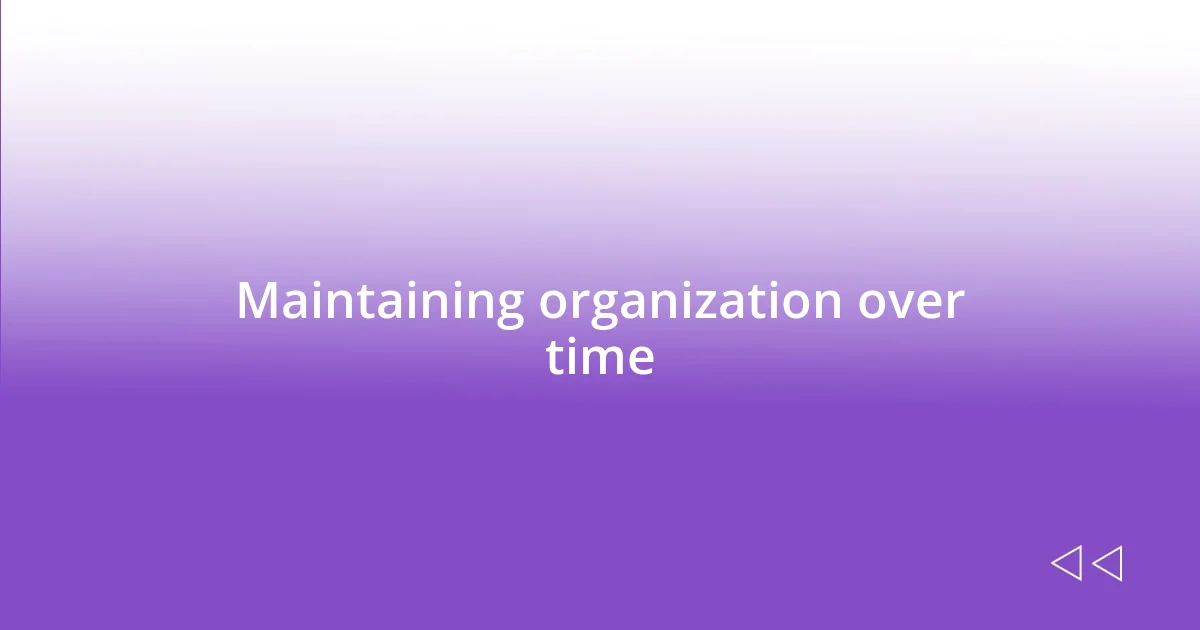
Maintaining organization over time
Maintaining organization over time requires a commitment to consistency. I make it a habit to dedicate a few minutes at the end of each day to tidy up my studio. It’s surprising how this small ritual keeps chaos at bay and helps me start every morning with a clean slate. Have you ever noticed how a tidy space can greatly affect your mood and productivity?
In my experience, it’s essential to review your organization systems regularly. About once every season, I take a step back to assess what’s working and what isn’t. During one such review, I discovered that I had stockpiled an unnecessary amount of paintbrushes. By decluttering, I not only created space but also felt lighter and more focused. Isn’t it liberating to shed what no longer serves you?
Another helpful strategy is to develop a labeling system for my storage containers. At first, I thought labels were just for the overly meticulous, but now I see their value in preserving order. When I quickly glance at a label, I can reach for what I need without rummaging through various boxes. Don’t you think that a little structure can enhance creativity by reducing distractions? Knowing where everything is allows me to dive into my work without hesitation.
